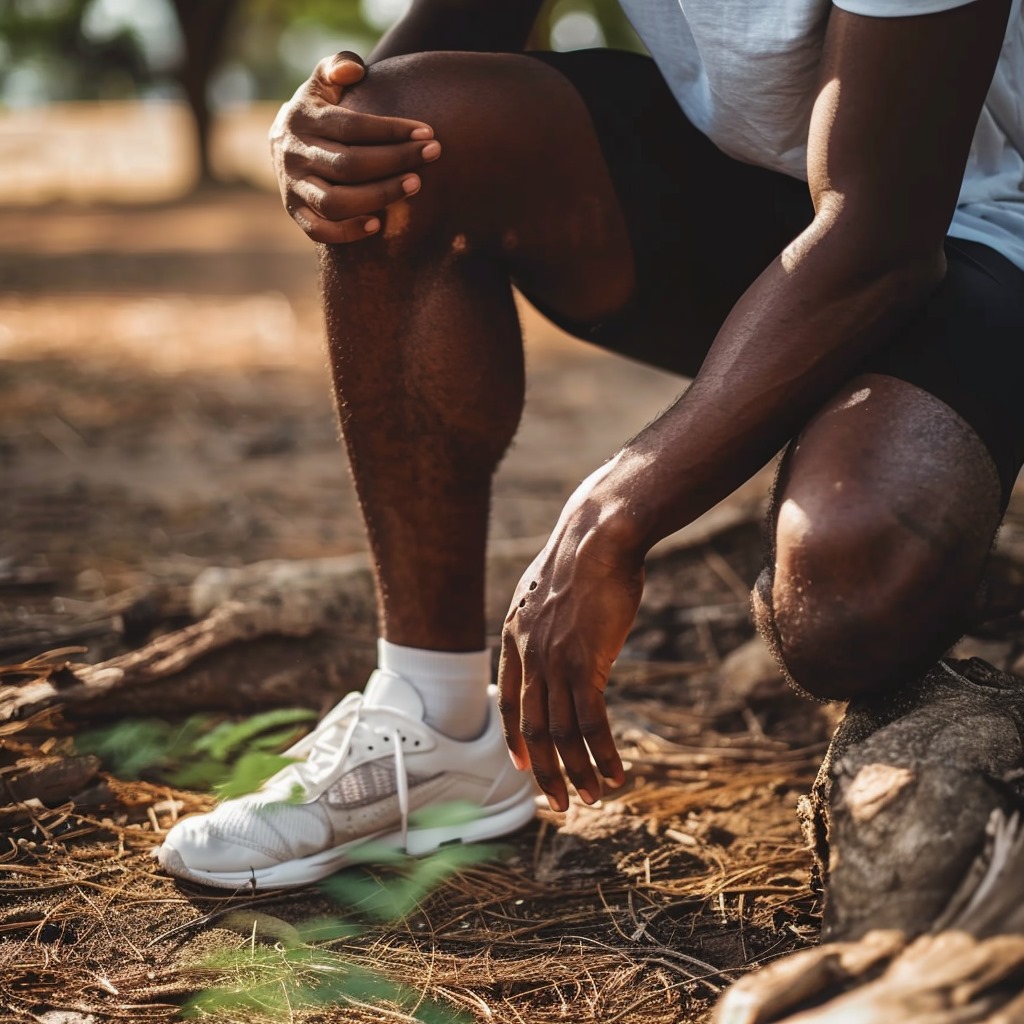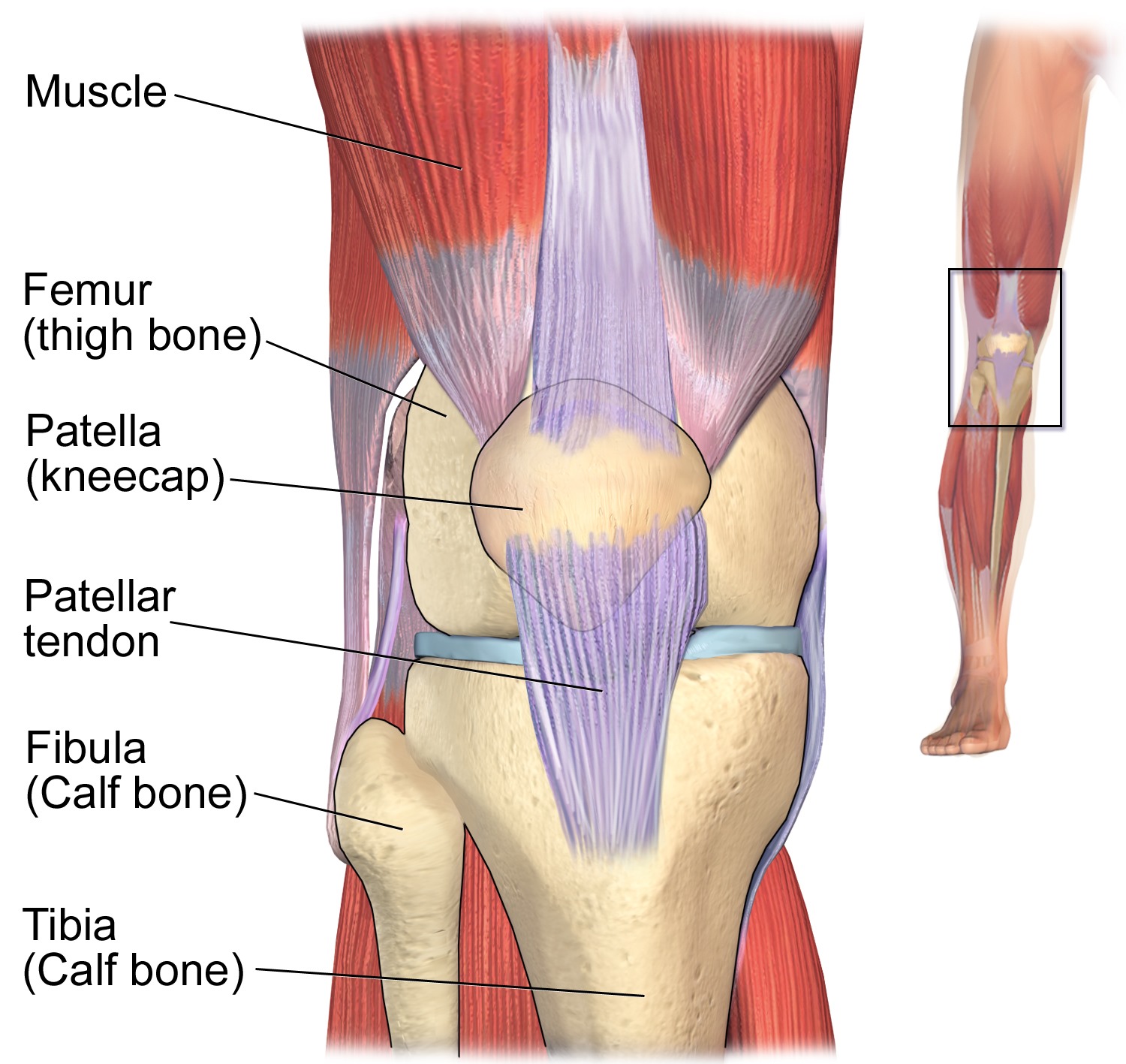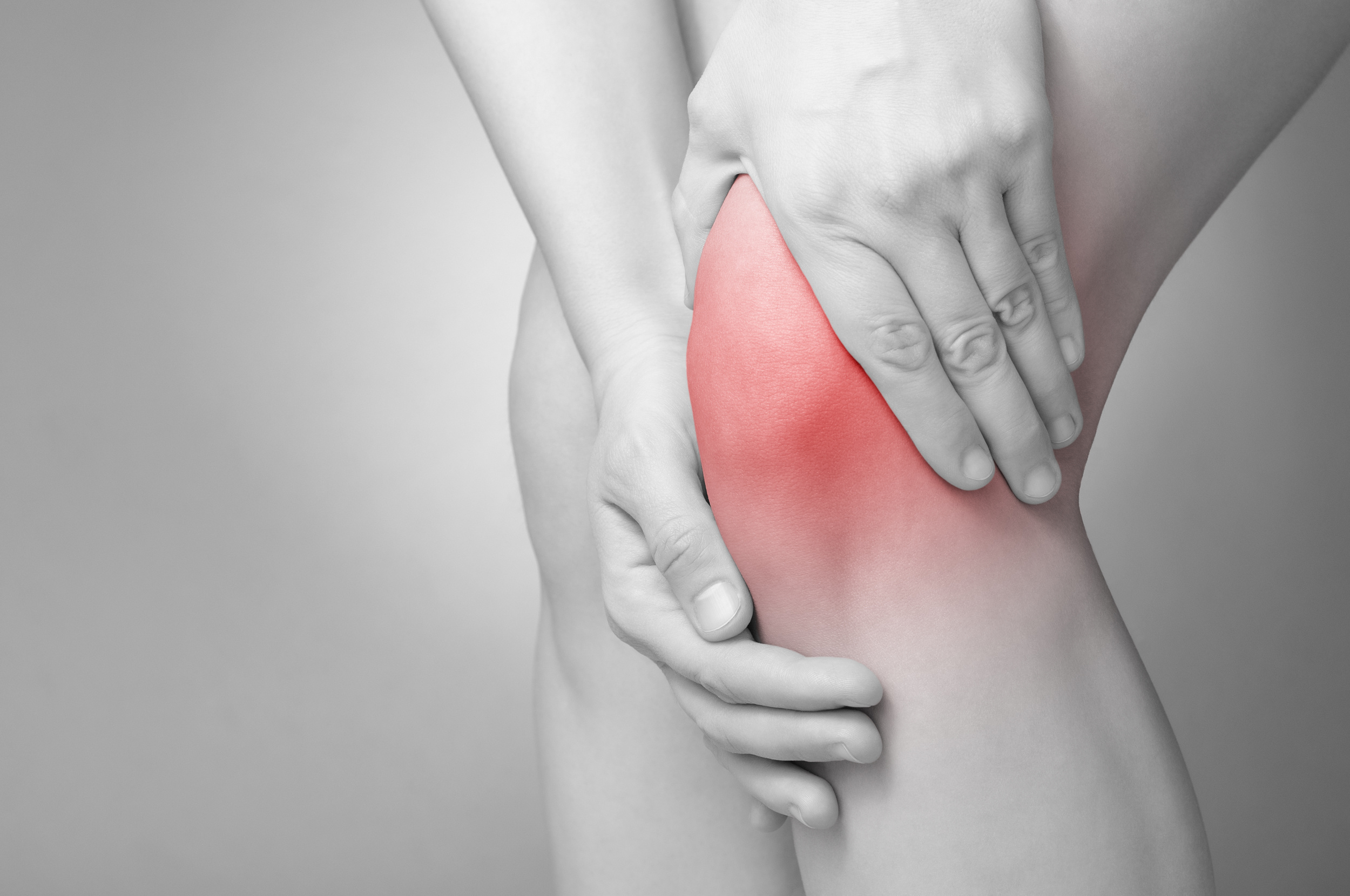Knee issues

The knee is a remarkable joint that plays a pivotal role in supporting your body weight, facilitating movement, and connecting the thigh and shinbones. Comprising bones, ligaments, tendons, and cartilage, the knee undergoes constant stress and strain, making it susceptible to various conditions. Here, we delve into common knee issues, explore their potential causes, and offer insights into self-management.

The image above shows a schematic picture of the knee's anatomy.
Many factors can contribute to a wide variety of knee or kneejoint problems. By recognizing symptoms on time, adopting healthy lifestyle practices, and seeking professional help when necessary, you can contribute to the longevity and strength of your knees.

Now, let's explore different types of knee problems. We'll first look into the common types of knee problems and then focus on how to recognize your knee symptoms correctly.
Knee Osteoarthritis
Knee osteoarthritis is a condition characterized by the gradual wearing down of the joint's protective cartilage. This often results in symptoms such as pain, stiffness, and reduced mobility. Age, activity-related knee pain, and limited morning stiffness are key indicators. Causes may include generalized osteoarthritis and elevated levels of hyaluronic acid —a marker for cartilage remodeling.
Patellofemoral Pain Syndrome
This syndrome involves pain around or behind the kneecap, exacerbated by activities like sitting, squatting, or climbing stairs. Causes may include muscle imbalances, overuse, or misalignment of the patella. Identifying pain triggers and adopting alternatives can aid in self-management.
Prepatellar Bursitis
Prepatellar bursitis manifests as swelling in front of the knee and may be linked to repetitive kneeling or direct trauma. While most cases resolve with the removal of the triggering factor, bacterial infections can cause redness, fever, and severe pain, requiring urgent medical attention.
Iliotibial Band Syndrome
This syndrome results in pain at the outer side of the knee, particularly during or after physical activity. Imbalances in load and structural factors may contribute. Adjusting activities and addressing contributing factors can facilitate recovery.
Jumper's Knee
Jumper's knee, or patellar tendinopathy, involves pain at the patellar tendon, especially after activities like jumping. Overuse and strain on the tendon are common causes. While the prognosis is generally favorable, persistent symptoms may necessitate professional evaluation.
Osgood-Schlatter Disease
Common in adolescents, Osgood-Schlatter disease is marked by painful swelling at the tibial tuberosity. Symptoms usually resolve after the growth spurt, but prolonged symptoms or persistent swelling may require medical attention.
- Reduced Flexion (bending) or Extension (stretching): Difficulty in fully bending or straightening the knee may indicate knee osteoarthritis.
- Crepitus (crackling) During Movement: Audible or palpable cracking or grinding sensations during knee movement may suggest cartilage wear in knee osteoarthritis.
- Sensitivity of Joint Space: Discomfort or pain upon touching specific areas around the knee joint may be linked to osteoarthritis.
- Pain that Worsens with Prolonged Sitting: Patellofemoral pain syndrome can be identified by pain behind or around the patella that worsens with prolonged sitting.
- Swelling in Front of the Knee: Prepatellar bursitis is characterized by localized swelling in front of the knee.
- Pain at the Outer Side of the Knee: Iliotibial band syndrome results in pain at the lateral femoral condyle during or after sports activities.
- Pain at the Patellar Tendon: Jumper's knee involves pain at the patellar tendon, especially after loading activities like jumping.
- Painful Swelling at the Tibial Tuberosity: Osgood-Schlatter disease is marked by painful swelling at the tibial tuberosity.

Managing your knee health involves adopting proactive strategies that you can incorporate into your daily life. Here are some key recommendations:
Physical Activity: Engage in regular, moderate-intensity exercise that emphasizes mobility, strength, and endurance. Activities like swimming and cycling are particularly beneficial for your knees.
Weight Reduction: If your body mass index (BMI) is above 25, exploring weight reduction interventions can be beneficial. Consult your healthcare provider to determine the most suitable approach tailored to your needs.
Understanding Osteoarthritis Course: Engage in regular, moderate-intensity exercise that emphasizes mobility, strength, and endurance. Activities like swimming and cycling are particularly beneficial for your knees.
Exercise Therapy: Consider seeking the guidance of a physiotherapist if general advice proves insufficient. A personalized exercise program under their supervision can contribute significantly to your knee health.
For conditions like Osgood-Schlatter disease, conservative measures such as reducing activities that provoke pain can be effective. Professional consultation is advisable, especially for persistent symptoms.
Pain Relief: Incorporate over-the-counter pain relievers as a short-term solution for managing knee pain. Consult with your healthcare provider for guidance on suitable options based on your individual needs.
- In cases of sudden, severe pain, an inability to move the knee, or signs of infection such as increasing redness, warmth, swelling, limited range of motion, or fever, seek emergency medical attention promptly.
- If your symptoms persist or worsen despite your self-management efforts, it's important to consult your healthcare provider for a more in-depth evaluation.